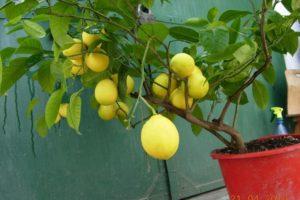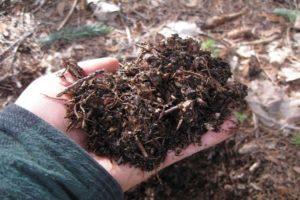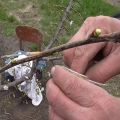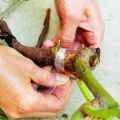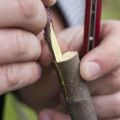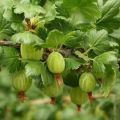How to properly plant a lemon at home so that it bears fruit
Growing lemon at home is a challenging and fun activity with many tricks. Why and how to plant a lemon planted in a pot, not everyone knows, but this procedure allows you to speed up the harvest, improve its quality, or collect several different types of citrus fruits even on a small home tree located on the windowsill.
Benefits of grafting lemon
Lemon has a huge amount of vitamins and minerals and has long been valued by people for its benefits. In this case, a fruiting plant can be grown in an ordinary apartment and harvested several times a year.
Most people get their first lemon tree from the seed left over from eaten lemon. Such a plant develops well, but does not bear fruit for a long time and is called wild. You can wait 10-15 years for the first harvest from it, and sometimes the tree refuses to bear fruit at all.
Vaccination solves several problems:
- you can get several varieties of lemon on one tree;
- the grafted plant is less sick;
- begins to bear fruit earlier, the quality of the fruit increases significantly;
- a lime or orange can be grafted onto a lemon tree, they perfectly coexist and develop.
Vaccination at home stimulates fruit formation and makes it possible to get a harvest in 2-3 years after planting. You can plant 2-3 different varieties of lemon or other citrus fruits on the stock.
Dates
Grafting is carried out on the plant after 1.5-2.5 years. Later, the growth and development of the mother plant slows down, and the scion does not take root well. In this case, young tree branches are selected for inoculation. The best time for grafting is April-May, it can be carried out until August, so that the plant has time to recover. Vaccination done on a cloudy rainy day will take root better. The lower the grafting is done, the shorter the lemon will end up.
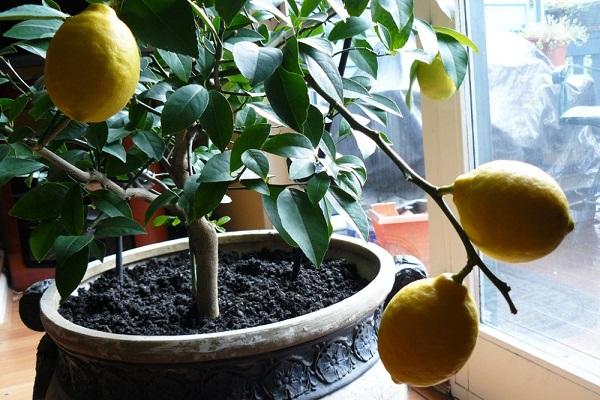
Choice of rootstock and scion
A healthy tree is selected for the stock, without damage, with strong roots and crown. A weakened plant must be treated before grafting, monitor the condition of the soil and fertilize it 2-3 weeks before the operation.
For the scion, you need to take material from a healthy tree that has begun to bear fruit. For indoor cultivation, Pavlovsky, Vanigliya, Novogruzinsky varieties are suitable. Today, there are more than 100 varieties of indoor lemon, differing in fruit size and flavor.
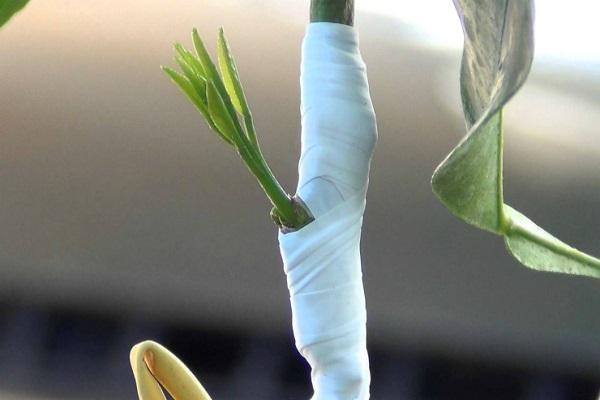
Required tools
The following tools are required for vaccination:
- a sharp scalpel or a special knife for grafting;
- garden var;
- a piece of electrical tape, fum tape or special garden tape;
- a narrow strip of cotton fabric;
- secateurs;
- alcohol solution.
All work is carried out with clean, alcohol-treated inventory. You need to wash your hands thoroughly in order to avoid infection of the plant during vaccination. You can get 2 vaccinations, then the likelihood of their survival increases.
Vaccination methods
There are several ways to plant a plant. Each of them has its own characteristics that you need to know about. Distinguish between cuttings, copulation and budding.

Cuttings
For the scion, choose a small branch with leaves from a varietal plant. Vaccination is done in 2 ways: for the bark or in the cleft.
For the bark
An adult sprig of varietal lemon with fully formed leaves is required for grafting. Young branches are not suitable for grafting. The lemon stalk should have 4-5 leaves, which are removed, leaving small stalks. The thorns of the plant are also removed from both branches. The vaccination site is treated with alcohol.
In the lower part of the scion, an oblique cut is made with a sharp knife. On the rootstock, a pruner removes a part of the branch, which is just above the grafting site, then a part of the bark is carefully cut and folded on one side.

The cut of the cutting is aligned with the bark-free area of the mother plant and is tightly fixed with electrical tape or fum tape. The cut on the rootstock, located above the grafting site, is processed with garden varnish. To keep the grafting site constantly moist, a cotton cloth can be wound over the fixing material, which should be constantly moistened.
Important: it is necessary to ensure that the sections on the cuttings and the mother plant coincide, and the scion does not move while fixing the dressing.
The grafted branch or the entire plant should be covered with a plastic bag to create an elevated temperature and humidity. The bag is tightly fixed at the bottom with twine. The top should be loose. This provides an increased temperature and humidity, which means better survival.

Into the cleft
The stalk is also prepared, but it is cut obliquely on both sides to make a wedge.
The pruner removes part of the branch on the rootstock above the grafting site, and the branch of the mother plant is split with a sharp knife in the middle to a depth of 2 centimeters. A handle is inserted into the cleft with a wedge and fixed with a tight bandage. The grafted twig is covered with polyethylene.
Copulation
This is the same grafting into the split, the difference is in the diameter of the grafted branches; when copulating, the diameter of the cutting and the scion must match.
Budding
For such a grafting, not a stalk is taken, but a bud of a varietal plant with a small area of bark under it (tongue). It is convenient to wrap around with a new, sharp blade. At the grafting site, on the mother tree, a T-shaped bark incision is made.
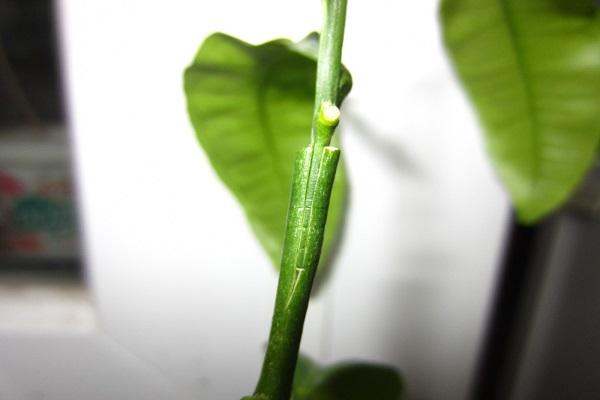
Important: care must be taken that the incision is not too deep and does not damage the subcortex.
The incised bark is neatly folded back, a ready-made kidney is inserted into the bare place, the tongue is tightly pinned by the bark, the graft is fixed with a tight bandage, the kidney is left open.
Care after vaccination
After the operation, the plant is given a warm, bright place, protecting the tree from direct sunlight. Creating a greenhouse effect with high humidity for the grafted twig is a prerequisite for a good survival rate of the graft, for this purpose a plastic bag is needed.
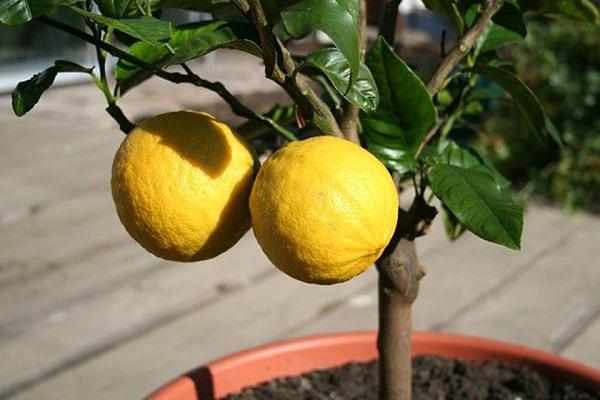
It is removed daily for ventilation and the vaccination site is sprayed with a spray bottle.
If wild leaves begin to bloom on the trunk or branch of the scion below the grafted area or lateral shoots appear, they must be removed immediately in order to provide the grafted seedling with a better flow of nutrients.After the operation, the plant is not fertilized until the sprout has completely taken root.
The shoot appears 2-4 weeks after the manipulations. He needs time to grow and get stronger, so the bag is not removed, making sure that it does not come into contact with the young leaves.
After 1.5-2 months, you can gradually begin to accustom him to normal conditions of detention. First, the bag is removed daily for 30-40 minutes, then the time is increased to 1.5-2 hours. After 5 days, the plant is released from the bag. If during the day the leaves begin to lose their elasticity, put it back in place and let the lemon a few more days.

When it fully adapts to the indoor temperature and humidity, remove the fabric dressing and fixing tape.
How to understand if the procedure was successful
If the stalk or bud during the first 5-7 days after inoculation retains freshness and elasticity, they have not darkened or dried out, then the grafting was carried out correctly, they are alive, and then everything depends on caring for the plant.

If the operation is unsuccessful, you need to give the plant a rest, and repeat it in a month. Today in flower shops you can find already grafted lemon seedlings, but growers try to grow it on their own, since purchased plants often die shortly after purchase.
Of course, vaccinating on lemon requires knowledge and skills, but if you carefully study the subject and do everything carefully, the chances of success are noticeably increased - in 2-3 years fruiting will begin, and the pet will delight the owner with the first harvest to the envy of friends and acquaintances.
